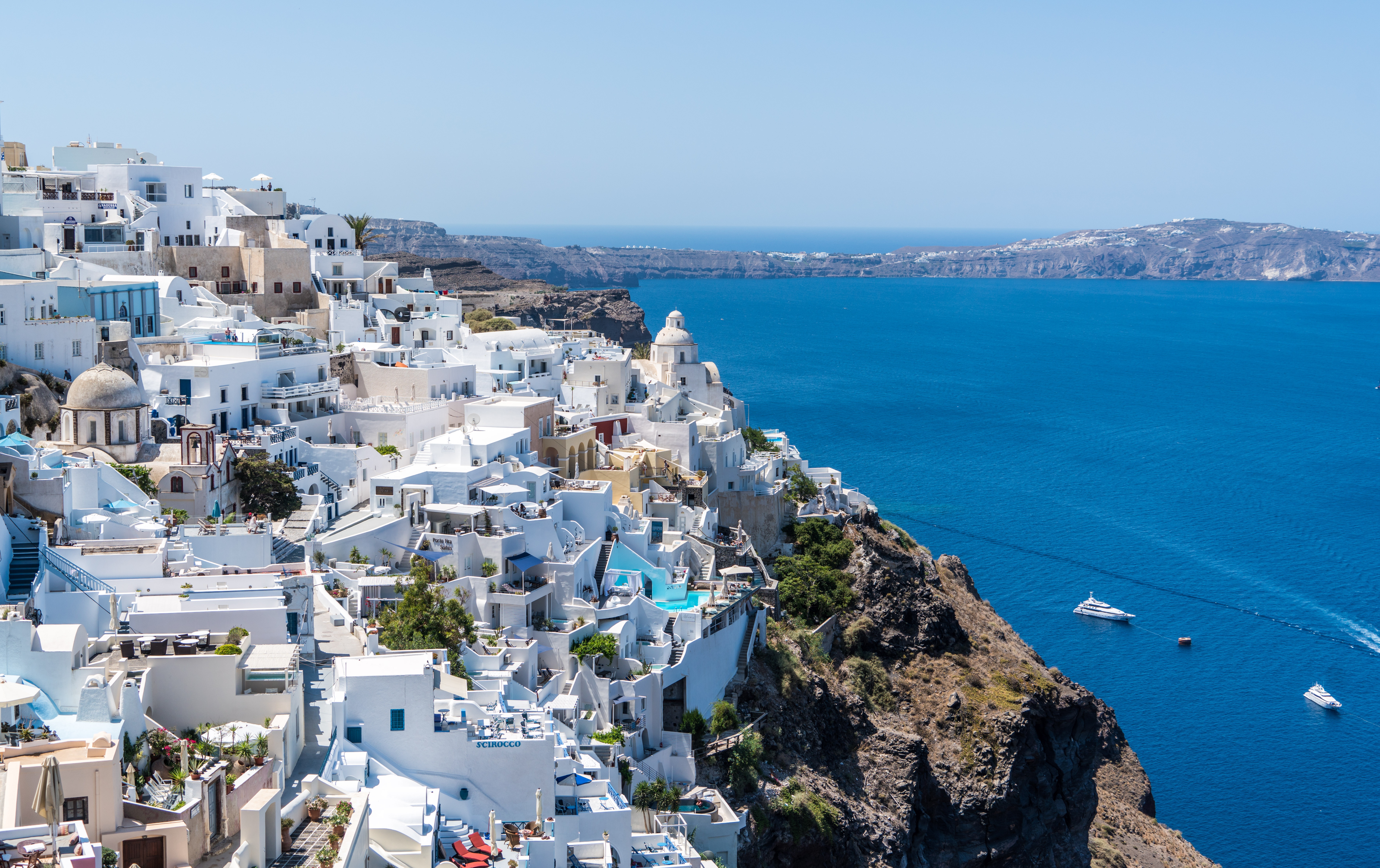Escape for the Weekend
Explore our collection of weekend

Greece
What to see in Greece? White and blue Cyclades Islands; Meteora monasteries; Acropolis; wrecks in Alonnisos national marine park; Santorini caldera; El Greco cave; sea life of Zakynthos Island; the Britannic wreck.
Individual Booking Try It FreeGreece
Greece, officially the Hellenic Republic, is a country located in the southern part of the Balkan Peninsula in southeastern Europe. Its nearest neighbours are Albania, the Republic of Macedonia, Bulgaria and Turkey. The capital of the country is Athens. Greece is washed by the Aegean Sea, the Ionian Sea and the Mediterranean Sea. The official language is Greek.
The national currency is the Euro.
80 percent of Greece's territory is covered with mountains, and the highest one is Mount Olympus. Greece has the longest coastline on the Mediterranean Basin (almost 14 thousand kilometers) and a great number of islands. Coastal Greece has Mediterranean climate, with mild winters and hot summers; whereas in the mountainous areas the climate is alpine; and the inland parts have temperate climate.
Greece with its ancient culture and appealing landscapes is one of the world's most popular tourist destinations. The Cyclades Islands attract by fabulously beautiful whitewashed homes and blue-domed churches; Meteora captivates by fantastic rock pinnacles topped with two dozens of monasteries; Mount Olympus draws those who like climbing or seeks gods’ presence; Mykonos invites to immerse into vibrant nightlife; Athens suggests to touch the cradle of western civilization – Acropolis; Delphi attracts those who like inscrutable ancient mystery.
Nature lovers will certainly like national parks and traditional villages of Zagori; perfect beaches of Halkidiki; green hills of Peloponnese; breathtaking sunsets on Santorini Island; marvelous landscapes of Skopelos; and picturesque harbors and volcanoes of numerous Greek islands.
Greece is famous for its cuisine. Traditional Greek food includes olives, feta cheese, seafood and of course - wine, which is various and very tasty in Dionysus' homeland.
Airports
Athens International Airport "Eleftherios Venizelos" (ATH), Greece's busiest international airport. It is the main base of SkyGreece Airlines, Ellinair, Volotea and Ryanair.
Heraklion International Airport, “Nikos Kazantzakis” (HER), the primary airport on the island of Crete, and the country’s second busiest airport.
Thessaloniki International Airport "Macedonia" (SKG), officially known as Macedonia International Airport.
Rhodes International Airport, "Diagoras" (RHO) is located on Rhodes Island about 14 km southwest of the capital city, Rodos.
Diving in Greece
Such a long coastline, warm sea waters, great number of islands and a cornucopia of wrecks make Greece a real diving paradise. Prior to 2006 there were severe restrictions of diving because of plenty of ancient artifacts and important archaeological items off the coast of Greece. These regulations were loosened not long ago and now you have chance to discover some unknown gems in Greece’s waters.
In the national marine park Alonnisos, which is the biggest marine protected area in Europe (more than 2000 Km2), you have an opportunity to explore caves and shipwrecks and to watch many species of fish (about 300), birds (up to 80 species), reptiles and also mammals. The park includes Alonnisos Island, six smaller islands and 22 uninhabited islets and rocky outcrops.
One of the most popular diving sites in Greece is Mykonos with its abundant marine life and interesting underwater environments. Lack of strong currents, warmth and clarity of the water make it an ideal place for beginning divers.
Another well-known diving destination is Santorini. Swimming and diving in fantastic blue waters of the 360-meter deep caldera will become an unforgettable experience.
Crete Island has perfect opportunities of night diving, deep diving, cave diving and wall diving. Here you can explore such sights as half submerged Greek remains, a Messerschmitt fighter from WW2 (lies at a depth of 24m to the west of Agia Pelagia) and the incredible El Greco cave with its beautiful stalagmites and stalactites.
While diving off Zakynthos Island you will see giant loggerhead turtles, octopus, moray eels, cuttlefish, flying fish, grouper, bream, wrasse and parrotfish.
Corfu Island suggests to enjoy coral reefs and to explore the wreck of the Nisopoulo either a Greek or Roman ship, surrounded with amphora. Another famous wreck here is a British minesweeper, H.M.S. Regulus, sunk in 1945 and lying at a depth of 25m.
Technical divers can explore the wreck of the Britannic, the sister ship to the Titanic, lying at a depth of 120 meters off the coast of Kea.
